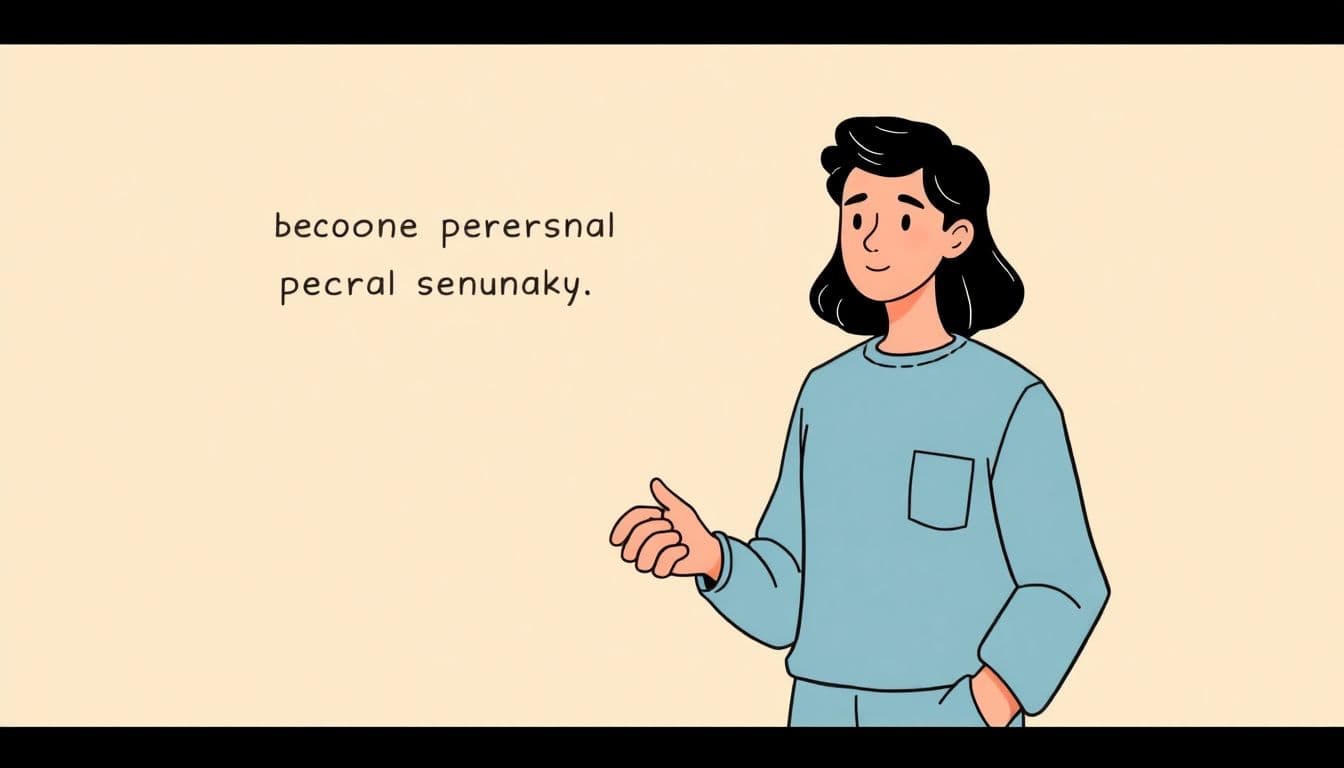Table of Contents
Ever find yourself thrown right into the thick of action when you start a new book or movie? That’s what does in media res mean in storytelling. It’s a technique where the narrative kicks off in the middle of events, often bypassing the traditional build-up to the climax.
This approach can be both thrilling and disorienting, offering a unique way to engage with the story from the get-go. It challenges readers and viewers to piece together the puzzle, making the experience interactive and immersive.
By starting in the midst of action, stories can instantly hook their audience, setting the pace for a dynamic and compelling narrative journey. It’s a bold storytelling choice that has the power to transform the conventional narrative arc into something unforgettable.
What Does In Media Res Mean?

When we dive into the heart of storytelling, one term stands out for its dramatic impact: “in media res.”
This Latin phrase translates to “in the midst of things,” and it perfectly encapsulates a technique where a narrative begins not at the conventional starting point but at a moment of action or a pivotal event well into the storyline.
The significance of in media res in storytelling cannot be overstated. By catapulting the audience into the middle of the action, storytellers can grab attention immediately, creating an instant hook.
This method contrasts sharply with traditional narrative structures that start with exposition, gradually building up to the climax.
Instead, in media res demands that the audience hit the ground running, offering an immediate taste of the drama, tension, or excitement to come.
This technique is not just about surprising the audience; it’s a deliberate choice to foreground the narrative’s most engaging elements.
Starting in the middle forces readers or viewers to actively engage with the story, piecing together the how and why behind the unfolding events. It’s a dynamic way to tell a story, relying on the audience’s curiosity and engagement to fill in the backstory as the narrative progresses.
In essence, in media res redefines the storytelling experience, making it more immersive and compelling from the very first moment.
Identify In Media Res in Stories

Recognizing an “in media res” beginning in stories, whether in literature, film, or other narrative forms, involves looking for specific elements that indicate the narrative is launching directly into a scene of action or a crucial moment. Here are some key indicators that a story is using this technique:
- Immediate Action or Conflict – The story opens with a scene of immediate action, tension, or conflict. Unlike traditional openings that might set the scene or introduce characters in a more leisurely manner, in media res plunges the audience straight into a pivotal event. This could be a battle, a dramatic confrontation, or a moment of high emotional intensity.
- Lack of Initial Context – There’s a noticeable absence of initial background information or context. The audience is thrust into the narrative without an introduction to the characters, setting, or situation, which creates a sense of mystery and compels them to keep watching or reading to understand the backstory.
- Questions Over Answers – The opening raises more questions than it answers. Because the story starts in the middle, viewers or readers immediately wonder what led to this moment. This curiosity drives engagement with the story as pieces of the backstory are gradually revealed.
- Disorientation with Purpose – A feeling of disorientation is common but intentional. The audience might initially struggle to understand what’s happening or why. However, this confusion is by design, encouraging active participation in unraveling the narrative’s full context and significance.
- Flashbacks or Expository Dialogue – The use of flashbacks or characters engaging in expository dialogue shortly after the opening can indicate an in media res beginning. These storytelling devices are often employed to fill in the backstory and provide the context needed to understand the opening scene’s full implications.
Identifying an in media res start is about sensing the narrative thrust into motion without the usual preliminaries. This method keeps the audience on their toes, making the unfolding of the story an active discovery process.
When you find yourself piecing together the storyline from clues sprinkled throughout the narrative, chances are you’re experiencing the dynamic storytelling power of in media res.
Benefits of Using In Media Res

Storytellers often gravitate towards the in media res technique for its numerous advantages, which can significantly enhance the narrative’s impact and audience engagement.
Here are some of the key benefits of using this storytelling method:
By starting in the thick of action or at a crucial narrative moment, in media res captures the audience’s attention right from the start.
This immediate engagement is invaluable for capturing and retaining audience’s interest from the outset.
Furthermore, in media res naturally creates suspense and intrigue, as the audience is dropped into a situation with little to no context.
This lack of information prompts readers to wonder about the events leading up to this point, keeping them hooked as they seek to uncover the story’s backstory and understand the characters’ motivations.
This technique requires the audience to play an active role in piecing together the story.
Unlike a straightforward narrative, where the plot is laid out from the beginning, in media res encourages the audience to think critically and connect the dots, making the storytelling experience more interactive and engaging.
Moreover, starting in the middle of the action can significantly enhance the narrative’s pacing, ensuring that the story moves quickly and maintains momentum.
This can be particularly effective in genres that benefit from fast pacing, such as thrillers, action stories, or adventure tales, keeping the audience on the edge of their seats.
This perspective provides storytellers with the opportunity to explore and present their narratives in non-linear ways, offering fresh perspectives on storytelling.
This can make well-worn storylines feel new and intriguing, as the unconventional structure forces audiences to engage with the narrative in different ways.
By carefully choosing which moment to start the narrative, storytellers can highlight particular themes or ideas from the very beginning. This strategic choice ensures that the themes are front and center throughout the story, enhancing their impact and resonance with the audience.
In summary, in media res is a powerful storytelling tool that, when used effectively, can transform a narrative. And if you pair it with other writing element, like for example, dynamic characters, paired with your impeccable writing, you can get a real work of art, worthy of turning into an audiobook for the whole world to enjoy.
Challenges of Writing In Media Res

Starting a story in media res, while compelling, presents its own set of challenges for writers. Here are some common difficulties writers may encounter, along with strategies for overcoming them:
Confusing the Audience
Challenge: Jumping directly into the action without context can leave readers feeling disoriented or confused, potentially deterring them from continuing with the story.
Tip: To mitigate confusion, quickly establish a clear point of focus in the opening scene. This could be a character, an action, or a dialogue that draws attention and serves as an anchor for the audience’s understanding, providing a gateway into the narrative’s world.
Revealing Too Much Too Soon
Challenge: There’s a risk of divulging crucial plot details prematurely in an attempt to provide context, which can sap the narrative of its suspense and intrigue.
Tip: Use restraint in revealing information about the plot and characters. Gradually dispense key details through dialogue, flashbacks, or characters’ inner thoughts, maintaining suspense while slowly building a comprehensive picture of the story’s background.
Balancing Backstory Integration
Challenge: Finding the right moments to integrate backstory without halting the momentum of the narrative can be tricky. Ineffectively timed exposition can disrupt the story’s flow and pacing.
Tip: Weave backstory elements seamlessly into the narrative through natural dialogue, characters’ reflections, or actions that hint at past events. This subtle approach keeps the story moving while filling in necessary background information.
Maintaining Interest After the Initial Hook
Challenge: After an exciting in media res opening, maintaining the same level of interest and engagement throughout the rest of the story can be challenging, especially once the narrative shifts to provide necessary exposition.
Tip: Ensure that the transition from the initial action to subsequent scenes is smooth and that each scene, regardless of its pace, contributes to character development or plot advancement. Keeping the stakes high and the objectives clear will maintain interest.
Keeping the Narrative Coherent
Challenge: Ensuring that the story remains coherent when starting from the middle can be difficult, especially when trying to maintain the mystery without confusing the audience.
Tip: Outline the narrative thoroughly, keeping track of what the audience knows versus what is still to be revealed. This will help maintain coherence and ensure that the revelations are timed effectively to enhance understanding and engagement.
By addressing these challenges with thoughtful planning and strategic storytelling, writers can harness the power of in media res to create compelling, engaging narratives that captivate audiences from the very first line.
Famous Examples of In Media Res

The technique of in media res has been employed across a variety of mediums to great effect, captivating audiences by plunging them directly into the heart of the action. Here are some notable examples:
- “The Odyssey” by Homer One of the earliest and most famous examples of in media res, “The Odyssey” begins in the middle of Odysseus’s 10-year journey home from the Trojan War. This starting point skips past the war itself and much of Odysseus’s voyage, creating immediate intrigue and drawing readers into his struggles and adventures. The technique emphasizes the themes of perseverance and the impact of fate and the gods in human affairs, engaging readers with the hero’s challenges and character development.
- “Medias Res” by Michael McFee This poem, whose title directly references the narrative technique it employs, dives into the midst of a life being lived. McFee’s choice to start “in the middle” mirrors the poem’s exploration of middle age, reflecting on the experiences that shape a person’s life. The structure enhances the poem’s thematic focus on life’s ongoing journey, illustrating how every moment is a continuation of what has come before and a foundation for what is yet to come.
- “In Cold Blood” by Truman Capote Capote’s nonfiction novel begins with the immediate aftermath of the Clutter family murders, omitting preliminary events or backstory. This approach not only captures the reader’s attention but also sets a somber, investigative tone for the narrative. By choosing to start in media res, Capote emphasizes the shock and senselessness of the crime, compelling readers to seek understanding and resolution alongside the author.
- “Beloved” by Toni Morrison Morrison’s novel starts in the middle of its characters’ lives, with the haunted house of 124 already established as a central figure in the narrative. This technique allows Morrison to explore themes of memory, trauma, and the legacy of slavery in a nonlinear fashion, reflecting the fragmented and cyclical nature of trauma. The in media res beginning immerses readers in the emotional and psychological complexities of the characters, encouraging a deeper engagement with their journeys towards healing.
- “Memento Mori” by Muriel Spark Starting in the midst of a series of mysterious phone calls made to elderly characters, Spark’s novel immediately intrigues readers with its premise. The narrative unfolds both forwards and backwards, revealing the characters’ pasts and their current dilemmas. This use of in media res amplifies the themes of aging, memory, and mortality, challenging readers to piece together the puzzle of the characters’ lives and the significance of their shared history.
These examples from literature showcase the impact of in media res as a narrative technique.
By beginning their stories in the midst of action or pivotal moments, authors engage readers’ curiosity and emotions from the outset, setting the stage for deeply immersive and thought-provoking experiences.
Transitioning from In Media Res to the Story’s Beginning

Transitioning from an “in media res” opening to the earlier parts of the narrative requires skillful storytelling to maintain the story’s pace and tension while filling in necessary backstory. Here are several techniques writers can use to achieve a smooth transition and enrich the narrative without disrupting its flow:
Gradual Revelation Through Dialogue
One effective method is to reveal backstory through natural dialogue between characters. This approach allows for the organic introduction of past events and character relationships without resorting to large expository blocks of text.
When characters discuss past events, it feels more integrated into the story’s present action, keeping the pace lively.
Flashbacks and Memory Sequences
Flashbacks are a classic technique for filling in backstory. To ensure they don’t stall the narrative, flashbacks should be used sparingly and purposefully, ideally at moments when the present action naturally segues into the past.
Memory sequences can offer emotional insight into characters, enriching the audience’s understanding of their motives and reactions in the story’s “current” events.
Strategic Use of Narrative Voice
A narrator or a character’s internal monologue can provide context and background information in a way that feels immediate and relevant.
Choosing moments when the character is reflective can tie the backstory directly to the narrative’s present concerns, making the transition seamless and maintaining narrative cohesion.
Incorporating Letters, Diaries, or Other Documents
Introducing elements like letters, diary entries, or news clippings can provide backstory in a way that adds depth and authenticity to the narrative world.
These elements can be discovered by characters in the present timeline, allowing for a natural integration of past and present.
Pacing the Revelations
To keep the story’s tension high, distribute the backstory revelations throughout the narrative rather than unloading them all at once.
This method not only maintains interest but also creates suspense, as readers anticipate learning more about the events that led to the in media res opening.
Ensuring Relevance to the Plot or Character Development
Every piece of backstory revealed should serve a purpose, whether it’s to deepen character motivation, explain a relationship dynamic, or set up a plot twist.
This relevance ensures that the transition from the story’s opening to its earlier parts feels necessary and engaging, rather than like a detour.
By skillfully managing the transition from an in media res opening to the story’s earlier events, writers can weave a narrative that is both compelling and cohesive. The key is to integrate the backstory in ways that feel natural and essential to the unfolding of the story, enhancing both the depth of the narrative and the engagement of the audience.
Conclusion
Exploring what does in media res mean reveals its significance as a timeless narrative technique that continues to captivate audiences. By starting a story in the midst of action, it immediately engages the reader, creating an immersive and dynamic storytelling experience.
This technique challenges both writers and readers to engage deeply with the narrative, piecing together the puzzle of the storyline in a way that is both engaging and rewarding. Understanding this technique enriches our appreciation of narrative art and its capacity to connect with audiences on a profound level.
FAQ
What is an example of in medias res?
An example of in medias res is the opening of Homer’s “The Odyssey,” where the narrative begins in the middle of Odysseus’s long journey home, skipping the Trojan War and much of his voyage, plunging the reader directly into his ongoing struggles.
What does in media res do to the reader?
In media res engages the reader immediately by dropping them into the middle of the action or a pivotal moment of the story. This technique sparks curiosity, encourages active participation in piecing together the story’s context, and maintains suspense from the outset.
What is a synonym for in media res?
A synonym for in media res is “mid-action.” Both terms describe the narrative technique of beginning a story not at its chronological start but at a crucial point within the unfolding events, typically involving significant action or drama.
Why do we use media res?
We use in media res to captivate the audience’s attention from the very beginning, create a sense of immediacy and urgency, and engage readers or viewers in an active role of uncovering the backstory and understanding character motivations through the unfolding narrative.
In medias res pronunciation?
In medias res is pronounced as “in ME-di-as res.” The phrase is Latin, and the pronunciation emphasizes the classical origins of this narrative technique, highlighting its long-standing significance in storytelling traditions.



